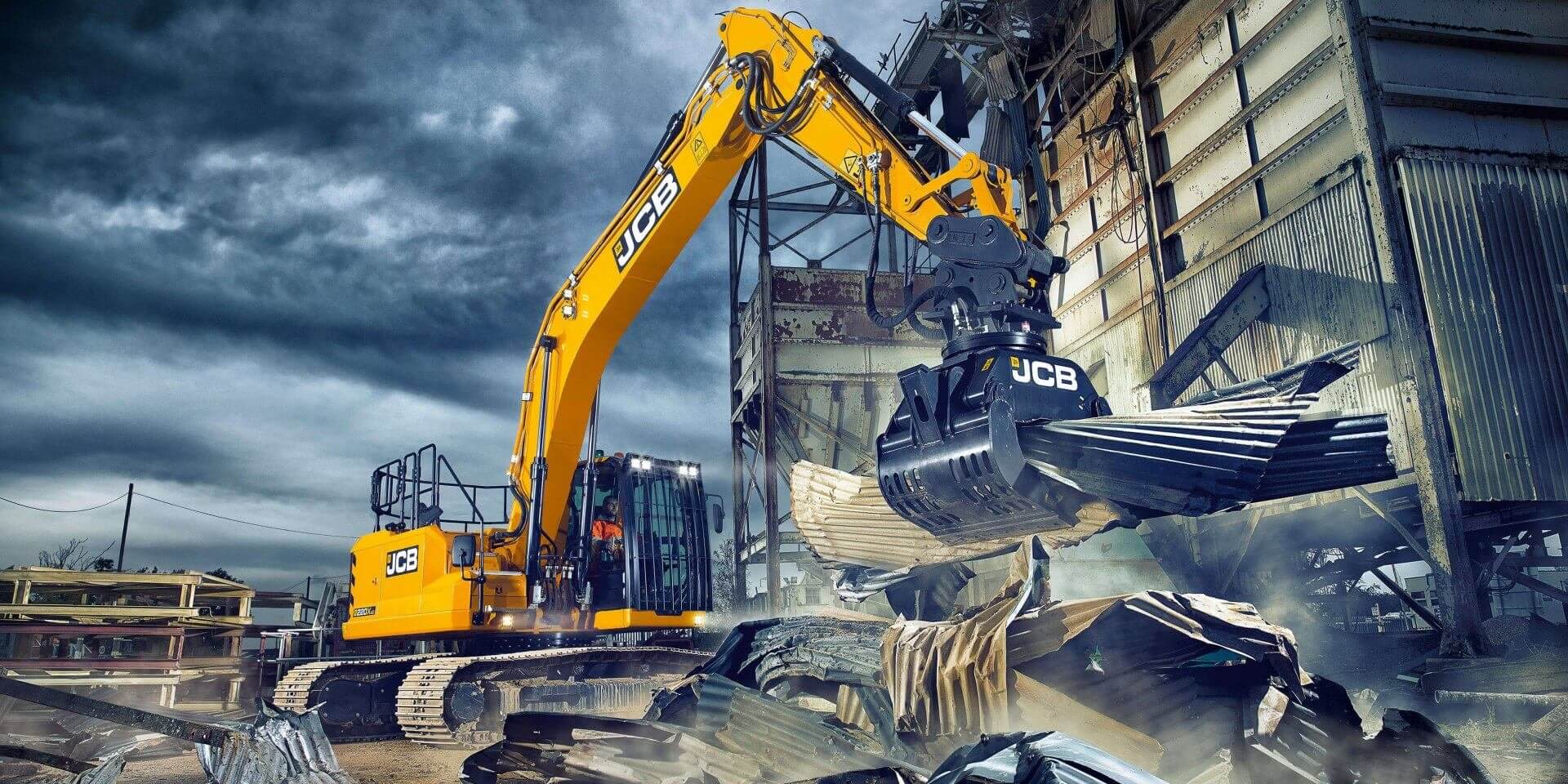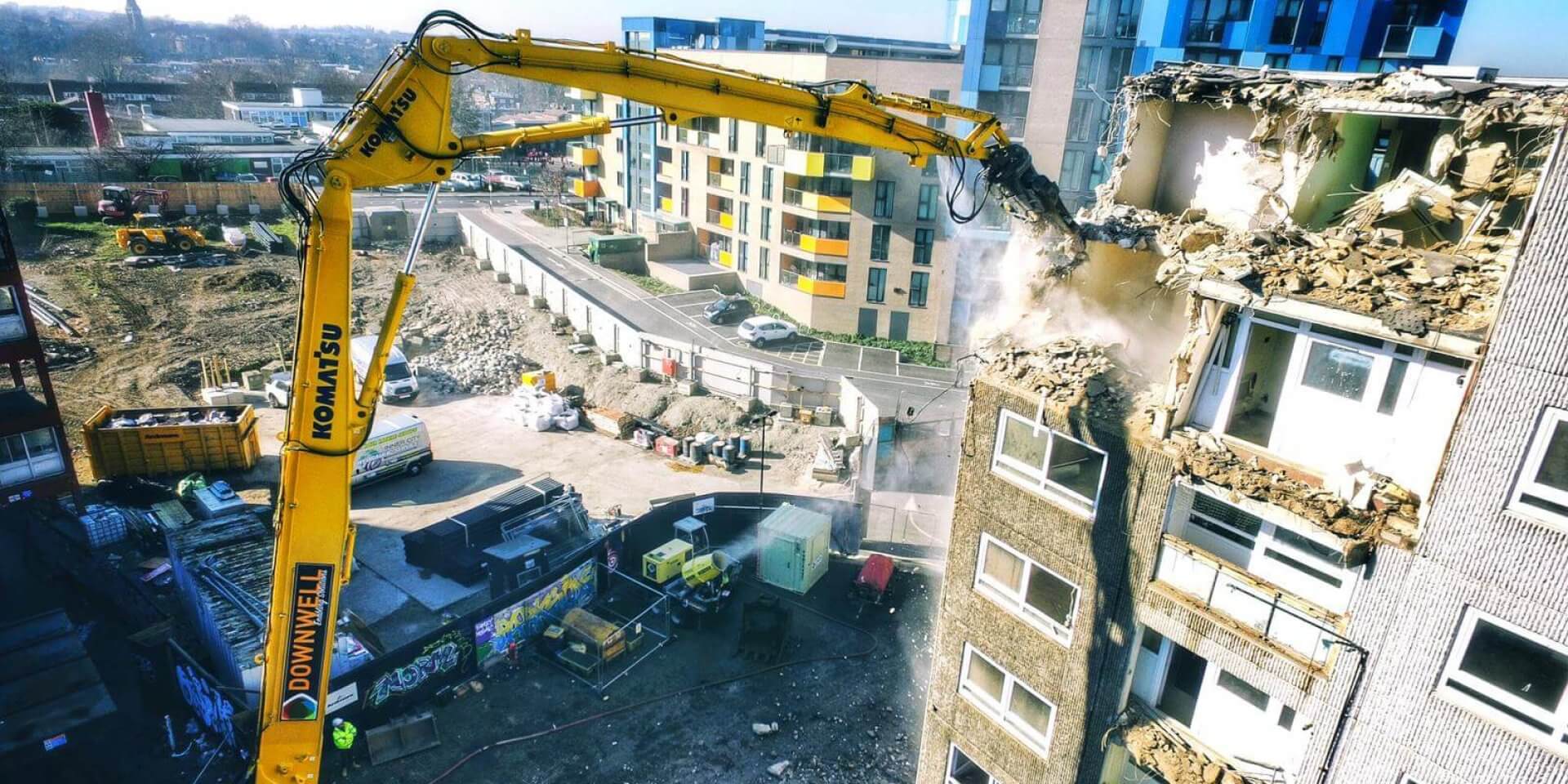New video focusing on demolition of Mill River Park dam in Connecticut.
Mill River Park dam comes down…
Demolition site safety, courtesy of Cat…
Caterpillar has published a new guide to demolition site safety.
 Those forward-thinking and safety-conscious people at Caterpillar have unveiled a new site safety guide for the demolition industry.
Those forward-thinking and safety-conscious people at Caterpillar have unveiled a new site safety guide for the demolition industry.
Available for purchase through the Caterpillar dealer network or for free online viewing, the new guide covers a whole range of work-related factors including seat belts, attachment changes, personal protective equipment, and slips and trips.
You can find the guide by clicking here.
Demolition News modeling agency…
Demolition News tries its hand at modeling with new DemoBoys t-shirt.
In amongst the various bills, final demands and threatening letters received here at Demolition News Towers this morning was a package that had journeyed across the Atlantic to provide us with some Autumn cheer.
But rather than boring you with words, take a look at the following video:
In addition to the long sleeve t-shirt shown in the video, we also have a short sleeve one that we’d like to offer to the winner of a free prize draw. In order to enter, please use the comments area below to answer this simple question: In which US city is Demo Boys based?
Just one small word of warning – The t-shirt we are offering is a US medium which means it’s suitable tor someone with the build of a silverback gorilla – 9 stone weaklings need not apply.
SCG swells our ranks…
Crusher spares supplier SCG is the latest to join our Business Directory.
 We are delighted to welcome Hamilton and Warrington-based crusher spares and wear part specialist SCG Supplies Ltd as the latest company to be listed on the Demolition News Business Directory.
We are delighted to welcome Hamilton and Warrington-based crusher spares and wear part specialist SCG Supplies Ltd as the latest company to be listed on the Demolition News Business Directory.
Please take a look at their informative website and be sure to check out their excellent series of “essential spares” series which gives a great insight into the most commonly used and often overlooked spares and wear parts for screens, trommels and crushers.
Beehives used as weapons in demolition protest…
Turkish residents give new meaning to “a bee in your bonnet” in anti-demolition protest.
 Residents clashed with police and other security forces on Tuesday during the demolition of some buildings constructed on watercourses in the Sancaktepe and Samandıra neighborhoods of İstanbul.
Residents clashed with police and other security forces on Tuesday during the demolition of some buildings constructed on watercourses in the Sancaktepe and Samandıra neighborhoods of İstanbul.
Sancaktepe residents blocked streets in their neighborhood with garbage containers early in the morning to prevent teams from demolishing their houses. Police, in response, tried to disperse the angry crowd with tear gas. When the residents started to throw Molotov cocktails and stones at police, police officers confronted them by firing warning shots into the air and using water cannons and pepper spray. Protestors also threw beehives at police.
Read the full story here.
Corn Exchange top down underway…
Top down set to start in heart of Peterborough city centre.
 A pair of mini excavator were lifted on to the Corn Exchange building in central Peterborough yesterday to begin the second stage of demolition work.
A pair of mini excavator were lifted on to the Corn Exchange building in central Peterborough yesterday to begin the second stage of demolition work.
Onlookers watched as a crane lifted the units onto the structure to commence the initial top-down demolition work. Once that is complete, the remains of the six-storey building in Cowgate will be demolished by high reach excavator.
Peterborough City Council’s head of strategic planning Andrew Edwards said: “The location of the Corn Exchange makes it a technically challenging demolition in the heart of Peterborough.”
Read the full story here.
Casket company stack set to fall…
Demolition set to start on casket company smokestack in Oneida, New York.
 Demolition work is set to start on the site of the old casket factory some time this week, according to Assistant City Engineer Mike Bowe.
Demolition work is set to start on the site of the old casket factory some time this week, according to Assistant City Engineer Mike Bowe.
The City of Oneida Common Council received two bids for the job and last week approved the low bid of $12,500 from United Contractors of Utica.
Neither bidder opted to bring it down with explosives.
The city put $99,000 in the 2009 budget in anticipation of the possible demolition after receiving legal authority by the common council to “abate dangerous conditions at the site.”
Read more here.
Big E still awaiting green light…
Bidding war and planning screw-ups leave Executive Inn still standing.
 The Executive Inn in Owensboro isn’t coming down this week after all. Officials said a paperwork error is causing the delay. Planners are still trying to figure out what to put in the hotel’s place.
The Executive Inn in Owensboro isn’t coming down this week after all. Officials said a paperwork error is causing the delay. Planners are still trying to figure out what to put in the hotel’s place.
The mayor said there’s no rush on a final plan, and in the meantime, the property will be used as green space, and to host next years barbecue festival.
There is no word yet on when demolition will start.
Read more here.
Create 3D buildings in Google Earth…
Google makes it easier for users to create 3D models on its Google Earth application.
Google is launching their version of Sim City today, Google Building Maker. The tool lets you create buildings for Google Earth. Building Maker lets you pick any building and construct a 3D version of it using photos and building blocks provided by Google. Google says that buildings are relatively fast to construct using their tool, taking only a matter of minutes.
Building Maker runs within your web browser and connect with your Google Account so you can get credit for your building. You can also use Google SketchUp to edit or modify your creation.
Read more here
A lesson in demolition…
DSM Demolition is hard at work on the demolition of the Walsall College near Birmingham.
Demolition of the old Walsall College tower block was moving apace yesterday as DSM’s high reach machine started work in earnest. The building formerly served as the main administration offices and tuition classrooms at the St Paul’s Street premises.
It is being demolished to make way for a proposed multi-million pound Tesco superstore. Billy Young, contracts manager of demolition firm DSM, said: “The removal of the main college building is the latest milestone in the project and we are pleased with progress so far. We are on schedule to complete demolition on the site early next year as expected.”
Read more here or watch the video below:





